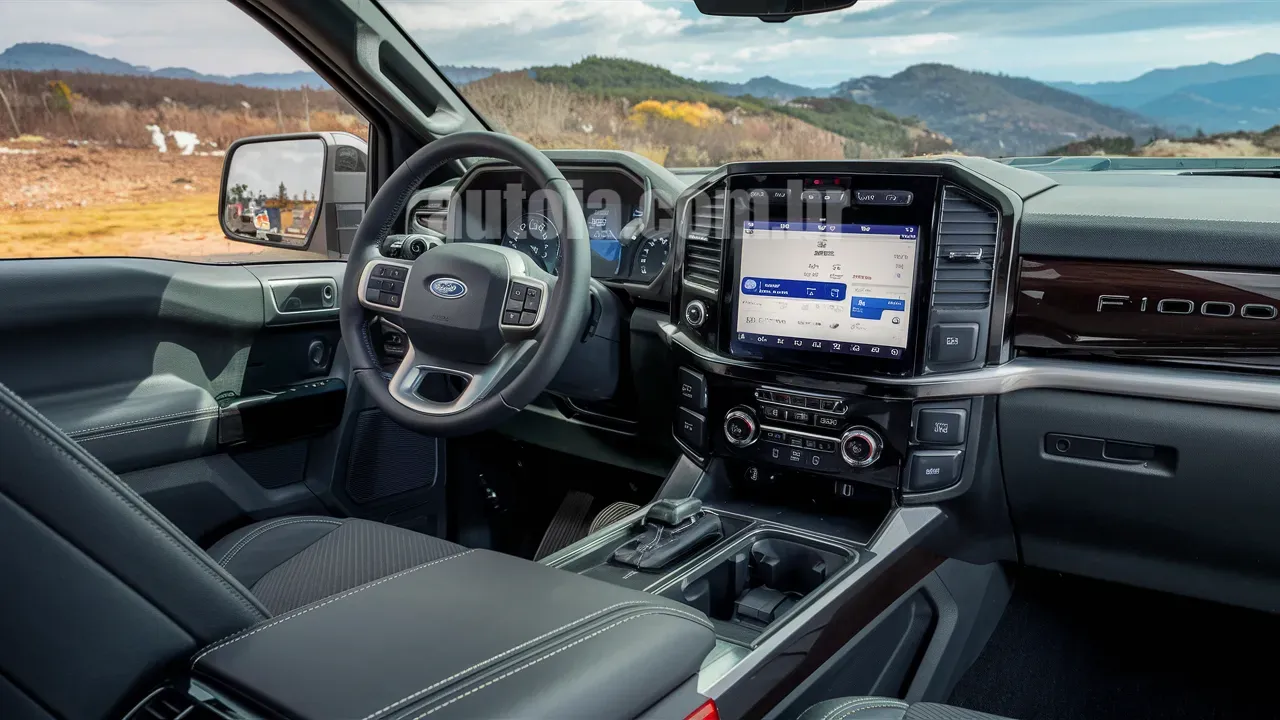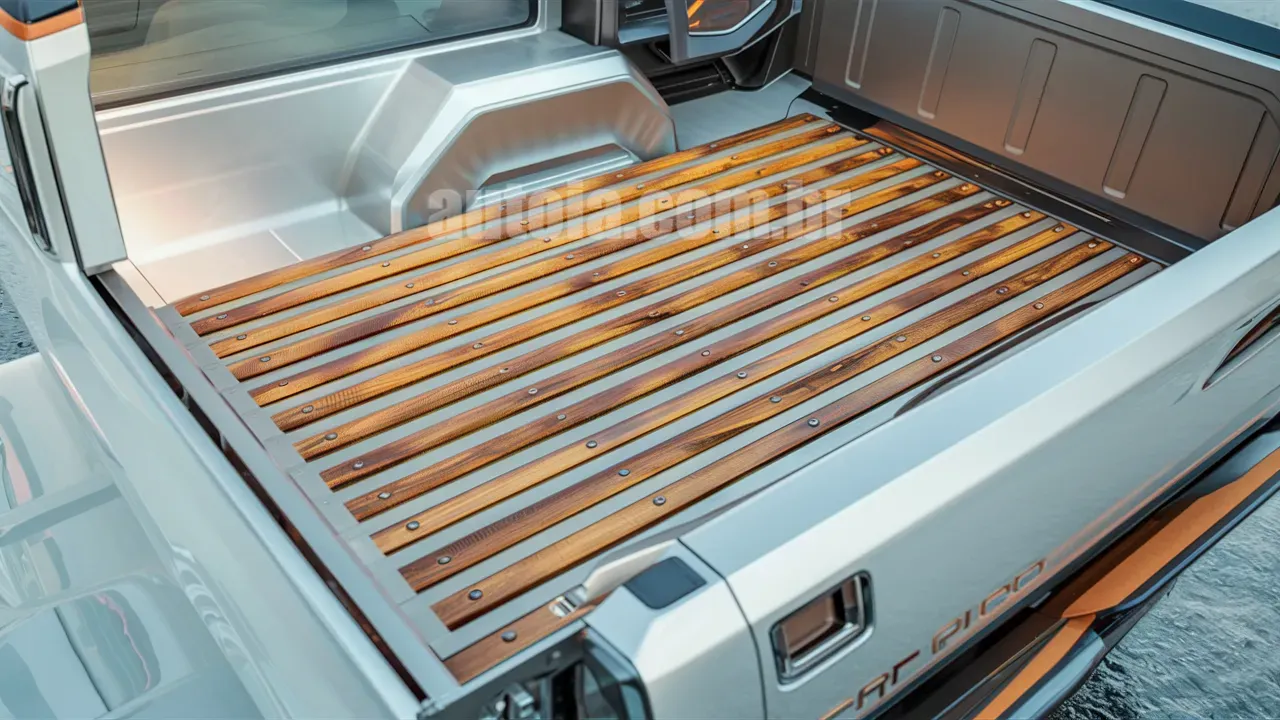Have you ever imagined what it would be like? Transformation of an automotive legend into a machine of the future? Ford made it happen with the Ford F1000 Electric, an electrifying reinvention of the classic pickup truck that conquered Brazil. In this article, you will explore all the details of this automotive marvel that combines nostalgia and technology, ready to redefine the market in 2025.
Revamped Design: A Detailed Look
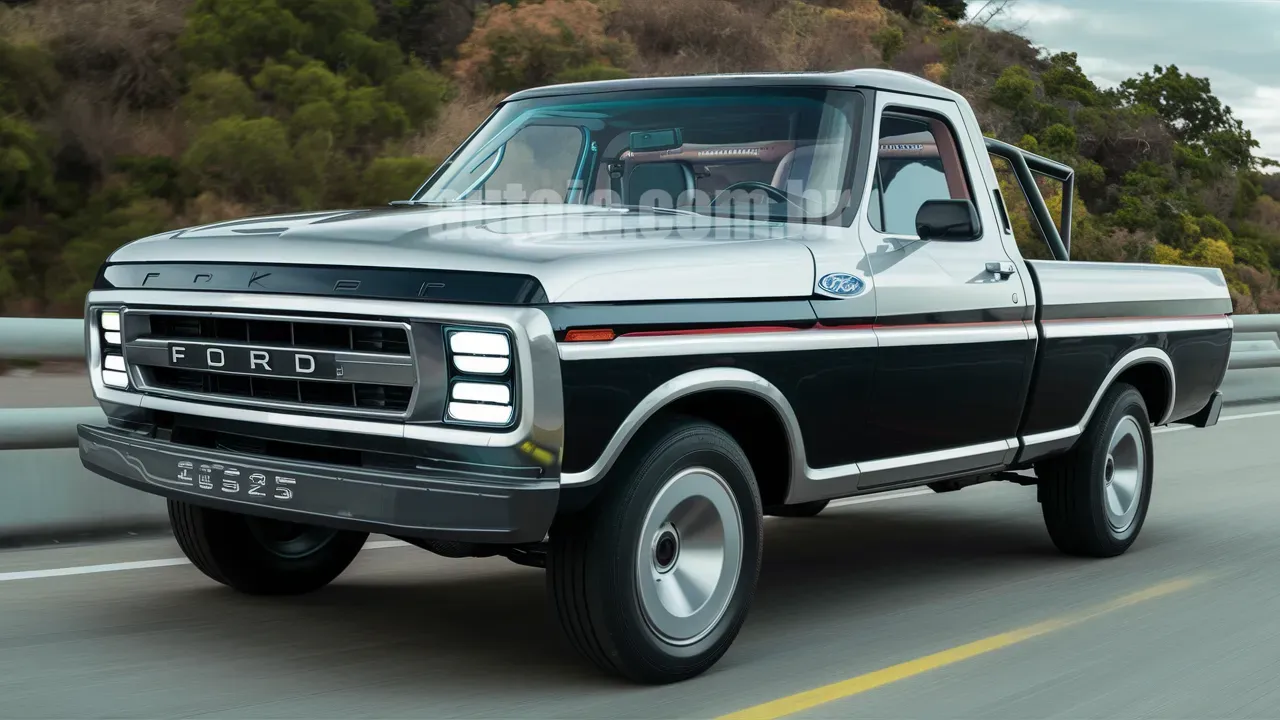
Looking at the Ford F1000 Electric, you immediately recognize its historical roots, but you notice that everything has been updated for the future. This is a vehicle that honors the past while projecting itself into the decades to come.
- Front: The front preserves the grandeur of the classic F1000, but with a modern touch. The LED headlights in a C shape offer a penetrating and technological look. The front grille has been redesigned to improve aerodynamics, without losing the DNA of the original series.
- Side: The side profile combines elegance and sportiness. The paintwork black and silver, with a subtle red stripe, highlights a modern and sophisticated look. The alloy wheels have been optimized to reduce aerodynamic drag, as well as adding extra charm to the pickup.
- Rear: The rear features minimalist design LED lights and a reinforced bumper, ideal for those who need robustness without sacrificing style.
Every curve of the F1000 Electric was designed with cutting-edge software, allowing 80s nostalgia to coexist harmoniously with 21st century functionality.
History of the Ford F1000 in Brazil: A Legacy of Achievements
To understand the impact of F1000 Electric, it is essential to revisit its history. Launched in Brazil in 1985, Ford F1000 quickly became synonymous with robustness and reliability. Used in both rural and urban areas, it was a reliable partner for farmers, traders and drivers in general.
During the 1980s and 1990s, the F1000 was widely adopted for cargo transportation, especially on farms and small businesses. Its versatility, combined with low maintenance costs, made it one of the most popular vehicles on the Brazilian market. This solid reputation was what prompted Ford to reinvent it for a modern audience focused on sustainability.
Ford F1000 Electric: The Revolution Under the Hood
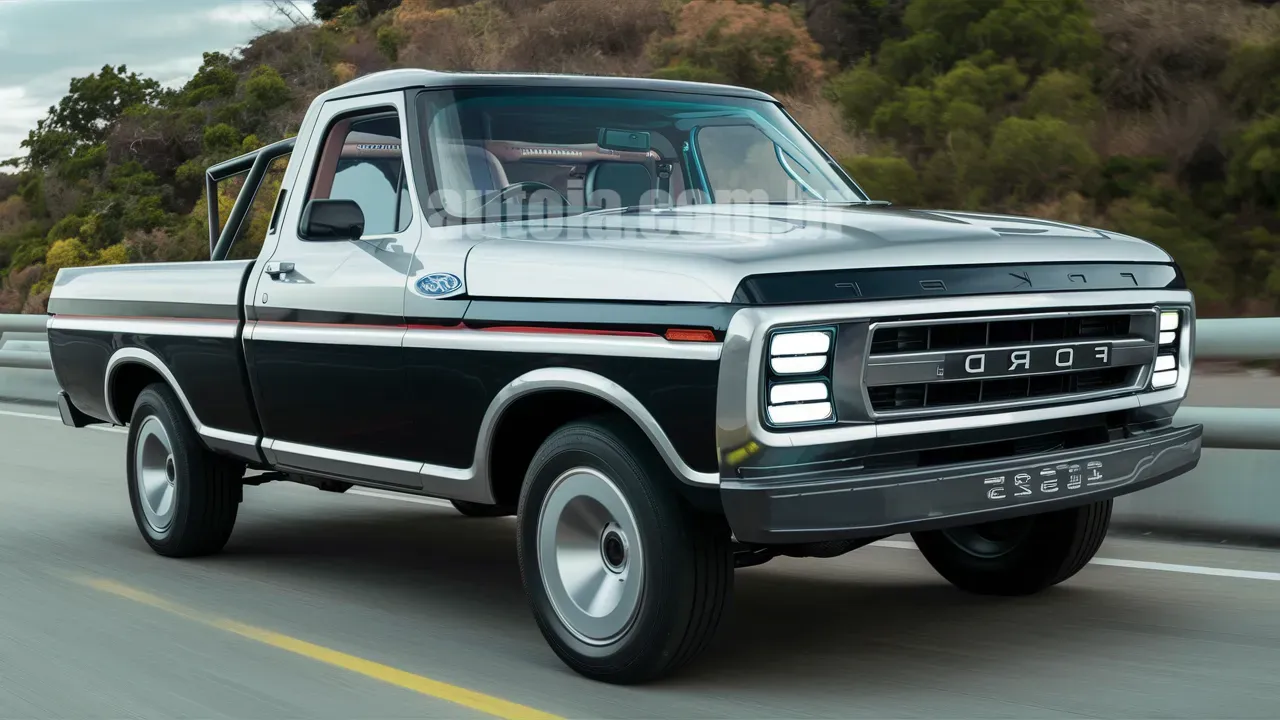
One of the biggest changes in F1000 Electric is, without a doubt, its engine. Here, the combustion engine gives way to a all-electric propulsion system, marking a revolution in the pickup truck segment.
The electric motor offers high performance, with immediate torque that guarantees quick starts and an extremely smooth ride. The long-lasting battery system allows for a range of approximately 400 km per charge, ideal for urban and road uses.
Furthermore, the system of energy recovery during braking increases efficiency, reducing energy consumption and extending autonomy. This change makes the F1000 Electric an option more sustainable and economical, compared to diesel models.
Price of the New Ford F1000 Electric: Affordable Technology
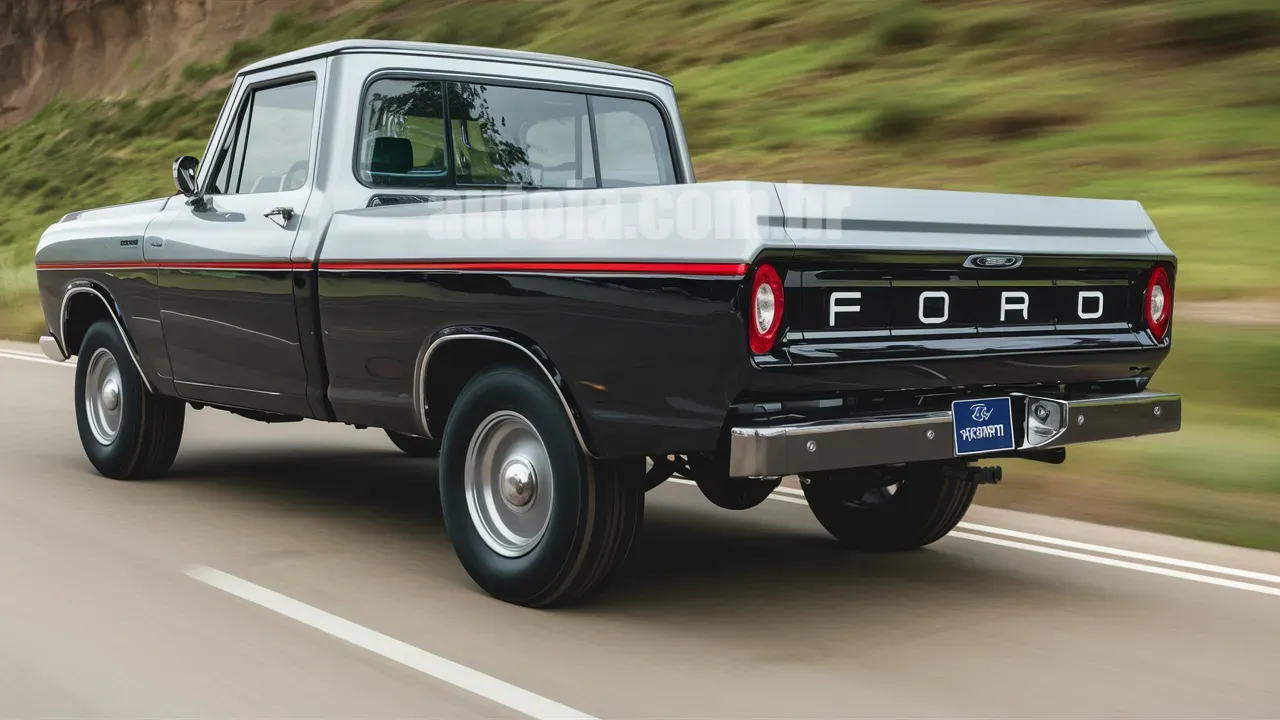
You might be wondering: how much does this technological marvel cost? Ford has gone to great lengths to offer the F1000 Electric at a competitive price. It is estimated that the model will reach the Brazilian market for around R$ 320 thousand, considering the current exchange rate and tax incentives for electric vehicles.
This value reflects the complete package of innovation, design, performance and sustainability that the F1000 Electric offers, making it one of the most attractive options in the electric pickup truck segment.
Renovated Interior: Comfort and Technology
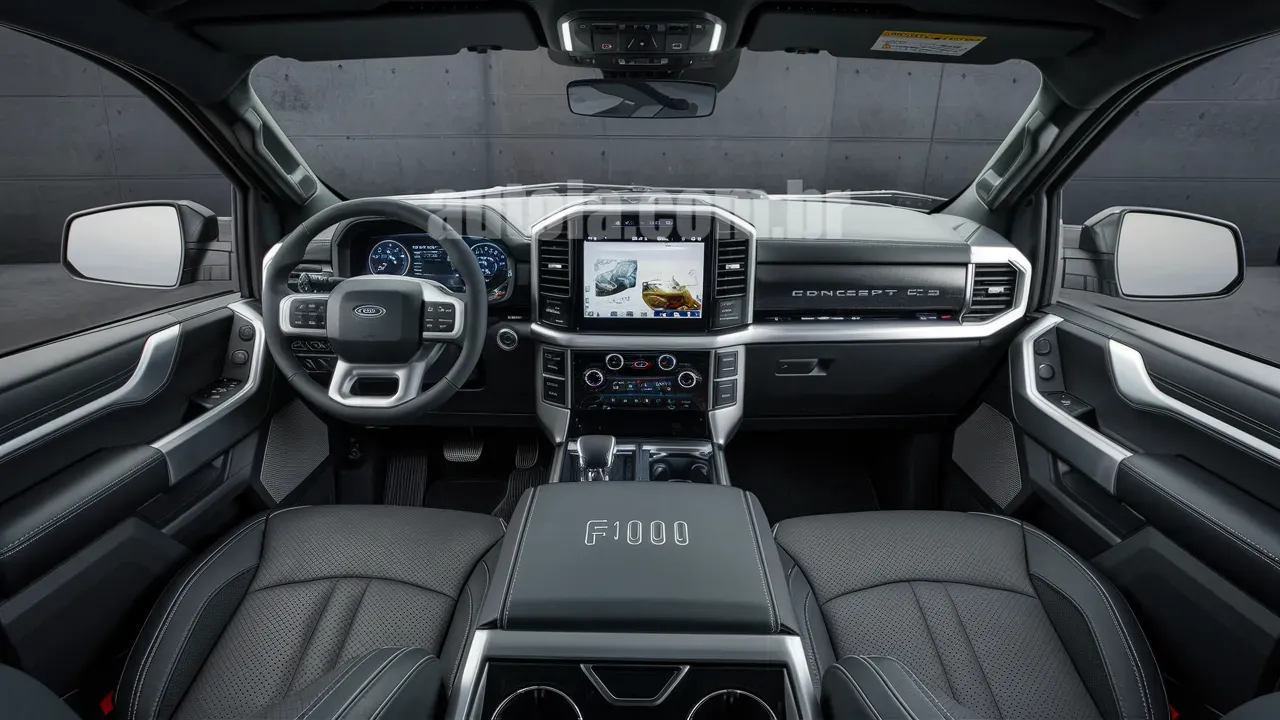
Upon entering the cabin, F1000 Electric, you will find an environment that combines luxury and functionality. The panel has been redesigned, integrating state-of-the-art digital screens that display navigation information, energy consumption and vehicle settings.
The seats, covered in ecological leather, are electronically adjustable, providing maximum comfort. In addition, the connectivity system includes support for Apple CarPlay and Android Auto, keeping you always connected.
Safety Equipment and Upgrades: Raising the Bar
Safety is a priority in Ford F1000 Electric. Among the main features you will find:
- Automatic emergency braking: To avoid imminent collisions.
- Adaptive cruise control: Which adjusts the speed according to the traffic.
- Lane Keeping Assist: To help on long journeys.
- 360 degree cameras: Making it easier to maneuver in tight spaces.
These systems not only make driving safer, but also more relaxed, especially for less experienced drivers.
Technical Sheet: Essential Details
Here are the main technical details of the Ford F1000 Electric:
| Specification | Details |
|---|---|
| Motorization | High performance electric motor |
| Autonomy | Up to 400 km per charge |
| Loading | Fast (80% in 30 minutes) and residential |
| Suspension | Reinforced for comfort and stability |
| Brakes | Regenerative |
| Wheels | Aerodynamic light alloy |
| Technology | Full connectivity and security systems |
Conclusion: The Pickup Truck of the Future is Here
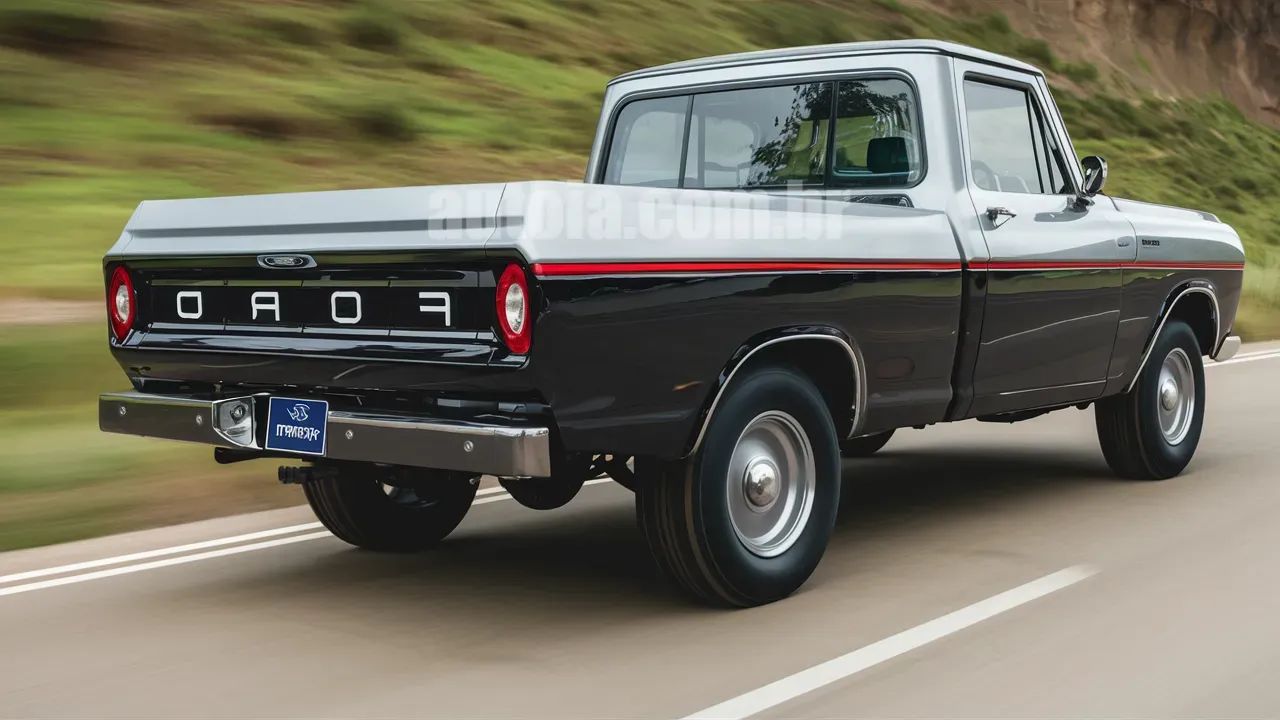
A Ford F1000 Electric is much more than a simple reinvention; it is a milestone in the automotive sector. Combining nostalgic design, sustainable motorization and cutting-edge technology, it meets the demands of the modern driver without forgetting its iconic origins.
If you are passionate about cars and are ready to embrace a more sustainable future, F1000 Electric is the perfect choice. More than a vehicle, it is a statement of commitment to innovation and the environment.
Now, all that's left is for you to decide: are you ready to embark on this new era with Ford F1000 Electric?
IMPORTANT NOTICE:
It is important to note that all content in this article, including text and images, was generated with the help of artificial intelligence and does not necessarily correspond to reality. This is an exercise in imagination and speculation about what the Ford F1000 Electric in a fictional automotive scenario in 2025.
